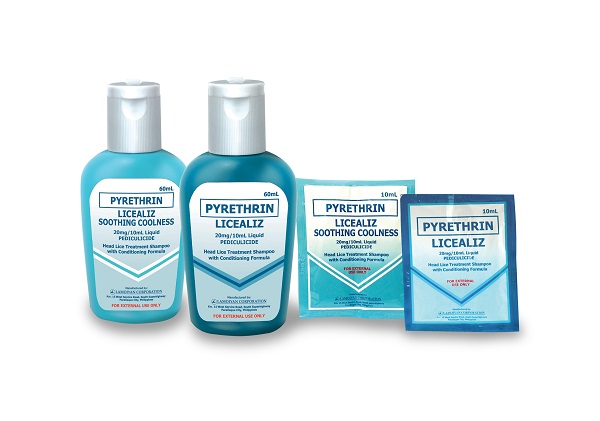Pediculosis or head lice infestation is one of the most common health problems in the country, especially among children. Aside from being irritating, head lice are contagious and tough to get rid of. They can also cause severe itchiness and infection of the scalp. Lice-infested children are often the targets of bullying in school, where they are called names and excluded from games and activities by their peers. Parents, on the other hand, feel incompetent and embarrassed for not being able to prevent head lice from infesting their children.
As a part of Lamoiyan Corporation’s advocacy to raise awareness about lice infestation issues, Licealiz Head Lice Treatment Shampoo shares the facts of lice to help spread correct information and educate the public on head lice.

Fact 1: Head lice are stealth experts.
Head lice are difficult to detect. Their small flat bodies make it easy for them to lay flat on hair and blend with their surroundings. Lice are also known to adapt to the hair color of their hosts, appearing darker when their host has dark hair, and lighter when their host has light hair. And if their stealthy ways fail them, head lice have six legs with hook-like claws, making it easy for them to attach themselves to hair and crawl very fast to avoid getting caught.
Fact 2: Head lice reproduce exponentially.
Head lice can live up to 30 days on a person’s scalp by feeding on their blood. In its lifetime, a single female head louse can lay up to 100 eggs. This means that a small group of head lice can undergo an immense growth in population in a short period of time, increasing the chances of skin irritation and infection, and making it easier for head lice to spread and infest other people. The sheer number of head lice is too overwhelming to completely be removed by suyod alone.
Fact 3: Anyone can get head lice.
Contrary to popular belief, head lice infestation is not a sign of poor hygiene or low social status. Head lice are highly contagious and can affect anyone, no matter how clean they are or their environment. All it takes is physical contact with lice-infested people and objects for you to get infested; hugging a loved one, borrowing a cap or clothes from friends, or just putting your face too close to someone else’s – doing these things may have you itching and scratching in mere moments.
Fact 4: Lice infestation can be prevented.
Head lice are notoriously hard to detect, quick to reproduce, and highly contagious; however, despite all these, lice infestations are preventable with the right measures. Borrowing head ornaments and pieces of clothing may lead to lice infestation so it is better to avoid sharing hats, pillows, towels and even combs. Weekly hair inspections are also recommended; use a suyod to check your children and loved ones for head lice. If a family member is found with head lice, treat them immediately to prevent the lice from multiplying and spreading to other people.

Licealiz Head Lice Treatment Shampoo effectively kills lice and nits after two weeks of use and prevents recurring lice infestations after one week of use. Its active ingredient pyrethrin, a natural extract from chrysanthemum flowers, is clinically tested and proven safe and successful in killing lice and nits while its conditioning formula keeps hair soft, smooth and fragrant.
Join Licealiz’s continuous effort to fight head lice infestation. For more information on head lice prevention and treatment, visit www.facebook.com/licealiz.


